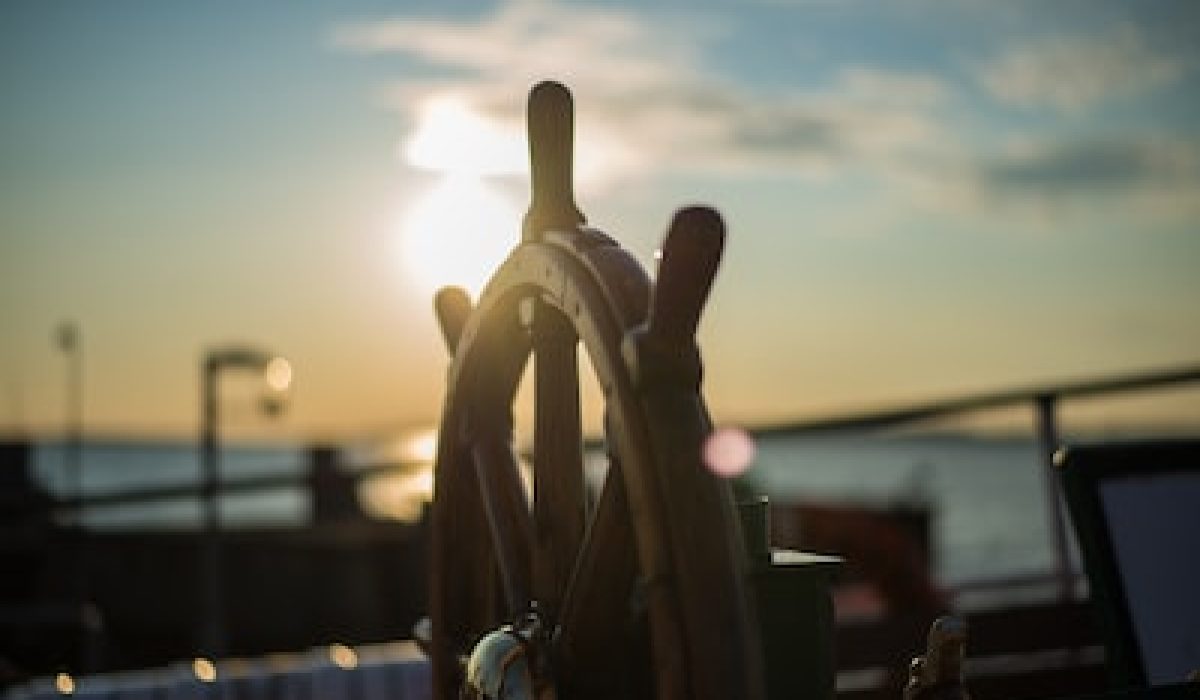Sailing ships hold a significant place in human history, revolutionizing the way we explore and trade across vast oceans. From their humble origins to their innovative designs, the journey of sailing ships spans centuries. Navigating by the stars, known as celestial navigation, enabled sailors to brave unknown territories and make long voyages. The impact of sailing ships on trade and exploration cannot be overstated, as they opened up new opportunities and shaped the world as we know it today. However, these journeys were not without challenges, and life on board presented a unique set of roles and jobs. In this blog post, we will delve into the fascinating history, evolution, and legacy of sailing ships, exploring their profound importance in shaping our world.
History Of Sailing Ships
The history of sailing ships stretches back thousands of years, with evidence of seafaring vessels dating as far back as 4000 BCE. These early ships were often simple rafts or dugout canoes, used for coastal fishing and short-distance travel. Over time, however, civilizations around the world began to develop more advanced sailing technologies that allowed for longer voyages and exploration of new lands.
One of the earliest and most influential advancements in sailing ship design was the development of the keel. The keel is a structural beam that runs along the bottom of a ship’s hull, providing stability and preventing sideways movement. This innovation allowed ships to sail more efficiently and handle rougher seas, expanding the possibilities for exploration and trade.
In ancient civilizations such as Egypt, Greece, and Rome, sailing ships played a crucial role in transportation, commerce, and warfare. The Phoenicians, renowned seafarers of the Mediterranean, were particularly skilled shipbuilders and navigators, establishing trade routes throughout the region. Their ships featured multiple sails and advanced rigging systems, setting the stage for future sailing ship designs.
- Sailing ship
- Sailing ship designs
- Navigating by the stars
| Time Period | Key Developments |
|---|---|
| Ancient Times | Use of rafts and canoes, development of keel |
| Phoenician Era | Introduction of multiple sails and advanced rigging systems |
| Medieval Europe | Emergence of square-rigged ships and navigational tools like astrolabes |
The Evolution Of Sailing Ship Designs ⏬
Sailing ships have been in use for thousands of years, with their designs constantly evolving to meet the changing needs and challenges of the times. From simple rafts and canoes to sophisticated tall ships and Clippers, the evolution of sailing ship designs is a testament to human ingenuity and the advancements in naval architecture. With each new design, sailors sought to improve upon previous models, enhancing speed, maneuverability, and cargo capacity.
One significant development in sailing ship designs was the transition from single-masted vessels to multi-masted ones. The introduction of the mast and sail revolutionized seafaring, allowing ships to harness the power of the wind and travel longer distances. The ancient Egyptians were among the first to utilize this technology effectively, employing sails on their ships around 3,500 BCE. These early sails were made of woven reeds or papyrus and were attached to a single mast. Over time, shipbuilders experimented with different combinations of masts and rigging, leading to the emergence of iconic sail configurations such as the square rig and the fore-and-aft rig.
Another notable development in sailing ship design was the widespread adoption of the hull shape known as the carvel. In the early days of sailing, ships were typically built using the clinker-built method, which involved overlapping planks of wood. The carvel design, on the other hand, featured planks joined edge to edge, resulting in a smoother and more streamlined hull. This innovation greatly improved the ship’s hydrodynamics and overall performance, allowing for faster and more efficient voyages.
- Furthermore, the introduction of the keel had a significant impact on sailing ship designs. The keel, a large timber beam laid along the bottom of the ship, served several purposes. It provided stability by lowering the ship’s center of gravity, prevented excessive rolling, and allowed for better steering control. The keel also acted as a backbone, strengthening the ship’s structure and enabling it to withstand the forces of the sea. With the incorporation of the keel, ships became sturdier and more seaworthy, enabling sailors to venture further into unknown waters.
| Ship Type | Key Features |
|---|---|
| Tall Ships | Multiple masts, square rigging, large cargo capacity |
| Clipper Ships | Streamlined hull, sharp bow, multiple sails |
| Galleons | Heavy armament, high freeboard, large hull |
As centuries passed and maritime trade flourished, ship designs continued to evolve. The 15th and 16th centuries saw the rise of iconic vessels such as the carrack and the galleon, which played pivotal roles in the Age of Exploration. These ships were specifically designed to navigate long distances and withstand the harsh conditions of the open ocean.
In conclusion, the evolution of sailing ship designs has been a remarkable journey through time, driven by the desire for better efficiency, increased capabilities, and safer voyages. From the modest beginnings of single-masted vessels to the majestic tall ships of the 19th century, each design iteration brought new possibilities and expanded the horizons of exploration. Today, while modern ships have replaced traditional sailing vessels, the legacy of these magnificent ships lives on, reminding us of humanity’s enduring quest for exploration and adventure.
Navigating By The Stars: Celestial Navigation 👇
Navigating by the stars, also known as celestial navigation, is a centuries-old method of determining a ship’s position using heavenly bodies. Before the advent of modern technology such as GPS, sailors relied on celestial navigation to traverse the vast expanse of the ocean. The stars provided a fixed reference point, allowing sailors to determine their latitude and longitude and navigate with accuracy.
The Importance of Celestial Navigation
Celestial navigation played a crucial role in the exploration and trade routes of sailing ships. It enabled sailors to determine their position accurately, even when they were far away from land or out of sight of any landmarks. By using the stars, sailors could plot a course, avoid hazards, and reach their destination safely.
The Tools of Celestial Navigation
Several tools were essential for celestial navigation. One of the most crucial instruments was the sextant. This device allowed sailors to measure the angle between a celestial body, such as the sun or a star, and the horizon. By measuring this angle, sailors could calculate their latitude. Another important tool was the chronometer, a timekeeping device that enabled sailors to determine their longitude based on the difference between local time and a known reference point, such as Greenwich, England. Additionally, tables and almanacs were used to calculate the position of celestial bodies at specific times and locations.
The Process of Celestial Navigation
Celestial navigation involved several steps. Firstly, sailors would use the sextant to measure the height of a celestial body above the horizon. They would then consult the tables or almanacs to determine the angle’s corresponding value for their specific location and time. After obtaining the angle and correcting for various factors, such as the ship’s motion, they could calculate their latitude. To determine their longitude, sailors needed to compare the local time, as measured by the chronometer, with the time of a known reference point. By finding the time difference, they could calculate the ship’s longitude.
Advantages of Celestial Navigation Disadvantages of Celestial Navigation
In Conclusion
Celestial navigation was a vital skill for sailors navigating the open seas before the introduction of advanced technology. The ability to use the stars as a navigational tool allowed sailors to explore new lands, establish trade routes, and make significant contributions to global exploration. Although modern navigation systems have largely replaced celestial navigation, understanding this historical method is essential to appreciate the challenges faced by sailors of the past.
The Impact Of Sailing Ships On Trade And Exploration
Sailing ships have played a crucial role in shaping the course of history, particularly in the realms of trade and exploration. These magnificent vessels revolutionized transportation, enabling the expansion of global commerce and the exploration of uncharted territories. With their advanced design and impressive capabilities, sailing ships became the backbone of maritime trade networks and facilitated the exchange of goods, ideas, and cultures across the world.
One of the most significant impacts of sailing ships was their effect on trade routes and the economy. Before the advent of these vessels, overland trading routes were time-consuming and often treacherous. However, the introduction of sailing ships unlocked new realms of possibilities. These ships were not only faster and more efficient than their predecessors, but they also had a larger carrying capacity, allowing merchants to transport larger quantities of goods over longer distances. This enabled the establishment of vast trade networks and fueled the growth of economies on a global scale.
In addition to facilitating trade, sailing ships also had a profound impact on exploration and the expansion of geographical knowledge. As sailors ventured into uncharted waters, they discovered new lands, resources, and trade routes that were previously unknown to the world. The age of exploration, spurred by the development of sailing ships, led to the discovery of continents, such as the Americas, and the establishment of new colonies and empires. Furthermore, these voyages of discovery opened up opportunities for scientific exploration and the study of diverse ecosystems, flora, and fauna.
The impact of sailing ships on trade and exploration extends beyond the economic and geographic realms. These ships played a significant role in intercultural exchange and the diffusion of knowledge. As trade routes expanded, so did the exchange of ideas, languages, religions, and technologies. The encounter between different cultures and civilizations catalyzed a process of cultural assimilation and cross-pollination that shaped the course of human history. The sailing ship, with its ability to traverse vast distances and connect diverse societies, became a conduit for the globalization of culture and the spread of ideas.
In conclusion, the impact of sailing ships on trade and exploration cannot be overstated. These remarkable vessels revolutionized transportation, shaped global trade networks, expanded geographical knowledge, and facilitated the exchange of ideas and cultures. The legacy of sailing ships is imprinted on our modern world, as they paved the way for globalization, intercultural connections, and the integration of economies. The evolution and importance of these sailing marvels serve as a testament to the enduring legacy they have left on our society.
Challenges Of Sailing Ship Voyages
Sailing ships have long played a significant role in the history of human civilization. These magnificent vessels were the primary mode of transportation for trade, exploration, and even warfare for centuries. However, sailing ship voyages were not without their unique set of challenges. From unpredictable weather conditions to limited food and water supplies, sailors faced numerous obstacles during their journeys. In this blog post, we will explore some of the challenges that sailors encountered while embarking on sailing ship voyages.
One of the major challenges of sailing ship voyages was the dependence on natural elements such as wind and ocean currents. Unlike modern-day transportation methods, sailing ships relied on wind power to propel them forward. This meant that a lack of favorable winds could result in a ship being stranded at sea for days or even weeks. Furthermore, sailors had to constantly monitor the shifting winds and adjust their sails accordingly to maintain optimum speed and direction.
Another significant challenge faced by sailors was the risk of encountering treacherous weather conditions. Storms, gales, and hurricanes were constant threats to sailing ships. These extreme weather events could cause serious damage to the vessels, endanger the lives of the crew, and even result in the loss of the entire ship. Sailing ship voyages required immense skill and bravery on the part of the sailors to navigate through such hazardous weather conditions.
Additionally, the limited resources on board sailing ships posed a challenge for sailors during their voyages. With no access to modern refrigeration or preservation methods, sailors had to rely on dried, salted, or smoked food supplies. This often led to nutritional deficiencies and diseases such as scurvy. Fresh water was also a scarce resource, and sailors had to ration their drinking water carefully. The lack of proper sanitation facilities on board further increased the risk of diseases spreading among the crew.
- In conclusion, sailing ship voyages were not for the faint-hearted. Sailors faced numerous challenges, including unpredictable winds, treacherous weather conditions, and limited resources. However, these challenges were also opportunities for sailors to showcase their skills, adaptability, and determination. The legacy of sailing ships and the men and women who sailed them lives on as a testament to human exploration and resilience.
Life On Board: Roles And Jobs
Life on board a sailing ship was a demanding and rigorous experience. The roles and jobs of the sailors were essential for the successful operation of the ship and the safety of the crew. From the captain to the lowest-ranking crew member, each individual had specific responsibilities and duties to fulfill.
The Captain: The captain was the ultimate authority on board the sailing ship. Responsible for the overall management of the vessel, the captain made critical decisions regarding navigation, sailed routes, and the safety of the crew. It was the captain’s duty to ensure that all operations ran smoothly and efficiently. Leading by example, the captain set the tone for the crew and ensured discipline and order on the ship.
The Mate: The mate, often referred to as the first mate, was the captain’s right-hand person. They assisted the captain with navigation, helmed the ship, and supervised the crew during daily tasks. The mate was responsible for maintaining the ship’s log, keeping records of the ship’s course and speed, and ensuring that necessary repairs were made when needed. In the absence of the captain, the mate assumed command of the vessel.
The Boatswain and Sailors: The boatswain, or bosun, was responsible for the maintenance and repair of the ship’s rigging, sails, and other equipment. They supervised the sailors, assigning them tasks such as hoisting and lowering sails, navigating the ship, and maintaining cleanliness on board. Sailors were the backbone of the crew, performing physically demanding tasks such as climbing masts, handling ropes, and operating various ship machinery. They worked in shifts around the clock to ensure the ship’s smooth operation.
- The Cook: One of the most vital roles on board a sailing ship was that of the cook. They were responsible for preparing meals for the crew using limited provisions and cooking facilities. With a challenging and ever-changing environment, the cook had to be resourceful and creative in making nutritious meals to sustain the crew during long voyages. Their role was crucial in maintaining morale and well-being on board.
| The Surgeon: | The Carpenter: |
|---|---|
| The surgeon on a sailing ship had the responsibility of providing medical care to the crew. They treated injuries, illnesses, and even performed surgeries when necessary. The surgeon’s skill and knowledge were invaluable in ensuring the well-being and survival of the crew during arduous voyages. | The carpenter’s role was to maintain and repair the ship’s structure, including the hull, decks, and furniture. They were skilled craftsmen responsible for woodworking tasks such as shaping, cutting, and joining pieces together. In case of any damage to the ship, the carpenter worked diligently to patch and reinforce the structure. |
Life on board a sailing ship demanded teamwork and a strong work ethic. Each crew member played a vital role in the ship’s operation and survival. Whether it was the captain leading the crew, the cook nourishing them, or the surgeon tending to their health, the collaboration and dedication of each individual were key to the success of their journey.
Famous Sailing Ships In History
Sailing ships have played a significant role throughout history, connecting people across continents and enabling the exploration of new lands. Many sailing ships have become famous for their remarkable voyages, daring adventures, and contributions to maritime history. In this blog post, we will delve into the stories of some of the most renowned sailing ships in history.
One of the most iconic sailing ships is the Santa Maria, which was captained by Christopher Columbus during his historic voyage to the Americas in 1492. This three-masted carrack was the flagship of Columbus’ expedition and symbolized the beginning of the Age of Discovery. The Santa Maria’s journey marked the first European contact with the New World and paved the way for future exploration and colonization.
The Endeavour is another famous sailing ship that holds great historical significance. Commanded by Captain James Cook, the Endeavour embarked on a scientific expedition to the Pacific Ocean from 1768 to 1771. This ship played a vital role in mapping the coastline of New Zealand and Australia, as well as discovering and documenting the Great Barrier Reef. Cook’s voyage on the Endeavour greatly contributed to the understanding of geography, navigation, and natural history.
Ship Name Captain Year Santa Maria Christopher Columbus 1492 Endeavour Captain James Cook 1768-1771
One cannot discuss famous sailing ships without mentioning the Mayflower. In 1620, this vessel carried the Pilgrims from England to the New World in search of religious freedom. The Mayflower’s voyage resulted in the establishment of Plymouth Colony, a pivotal moment in American history. This ship symbolizes the courage and determination of those early settlers who laid the foundation for the United States of America.
The Golden Hind is yet another renowned sailing ship, captained by Sir Francis Drake. This vessel was the first to circumnavigate the globe from 1577 to 1580. Drake’s journey on the Golden Hind enabled him to plunder Spanish ships and territories, becoming one of the most feared pirates of his time. The ship’s successful circumnavigation brought fame and fortune to Drake, solidifying his place in history as one of the greatest privateers.
In conclusion, famous sailing ships have left an indelible mark on history through their daring voyages, exploration of new lands, and contributions to scientific discoveries. The Santa Maria, Endeavour, Mayflower, and Golden Hind are just a few examples of the remarkable vessels that have shaped the course of history. Their stories continue to inspire and remind us of the incredible feats achieved by sailors and explorers of the past.
The Legacy And Importance Of Sailing Ships
Throughout history, sailing ships have played a significant role in shaping the world as we know it today. From ancient times to the modern era, the legacy of these remarkable vessels remains deeply rooted in human civilization. Sailing ships have left an indelible mark on various aspects of society, including trade and exploration, warfare, and even cultural exchange. They have not only revolutionized transportation but also served as a symbol of power, conquest, and scientific advancement. Today, we will delve into the rich history and explore the importance of sailing ships in shaping our world.
One of the key contributions of sailing ships lies in their role in trade and exploration. These vessels were instrumental in connecting distant lands and facilitating the exchange of goods, ideas, and cultures. The voyages of famous explorers like Christopher Columbus and Vasco da Gama wouldn’t have been possible without the capabilities of sailing ships. These bold adventurers relied on the wind and the swell of the seas to navigate uncharted territories and expand the boundaries of human knowledge. The legacy of their expeditions still resonates today, as they paved the way for global trade networks that persist in the modern world.
While sailing ships opened up new horizons, their journeys were not without challenges. Enduring hazardous weather conditions, treacherous seas, and the constant risk of piracy, sailors faced immense hardships during their voyages. However, these difficulties and the tenacity of those who overcame them are a testament to the importance of sailing ships. These vessels fostered resilience, courage, and determination among sailors, forging a unique camaraderie and creating the foundation for the maritime traditions that endure to this day.
Sailing ships also left a lasting impact on warfare. These versatile vessels became formidable tools on the battlefield, carrying artillery and enabling naval supremacy. The skill and expertise of sailors in maneuvering these ships in combat played a pivotal role in shaping the outcomes of numerous historical conflicts. From the majestic warships of the British Royal Navy to the swift and deadly pirate vessels of the Caribbean, sailing ships became synonymous with power, dominance, and naval superiority.
Beyond their practical applications, sailing ships hold a special place in literature, art, and our collective imagination. Paintings, novels, and poems have immortalized these majestic vessels, capturing their beauty, grandeur, and the sense of adventure they embody. From classic novels like Herman Melville’s “Moby-Dick” to famous paintings like J.M.W. Turner’s “The Fighting Temeraire,” sailing ships have inspired countless creative works, fueling our fascination with the sea and the mysteries it holds.
In conclusion, the legacy and importance of sailing ships cannot be overstated. Their impact on trade, exploration, warfare, and cultural heritage has shaped the course of history. These vessels symbolize human ingenuity, courage, and the timeless pursuit of knowledge. They continue to capture our imagination and remind us of the remarkable achievements of those who sailed the seas in search of new horizons. The legacy of sailing ships is a testament to the indomitable spirit of humanity and the enduring power of the wind.
Frequently Asked Questions
What is the history of sailing ships?
Sailing ships have a long history, dating back thousands of years. They were first used by ancient civilizations for trade and transportation.
How have sailing ship designs evolved over time?
Sailing ship designs have evolved significantly over the centuries. From simple rafts to complex multi-masted ships, advancements in technology and maritime knowledge have led to more efficient and capable sailing vessels.
How did sailors navigate using celestial navigation?
Celestial navigation refers to the method of determining a ship’s position using the stars. Sailors would use instruments such as sextants to measure the angles between celestial bodies and the horizon, allowing them to calculate their latitude and longitude.
What impact did sailing ships have on trade and exploration?
Sailing ships revolutionized trade and exploration by enabling long-distance travel and transportation of goods. They opened up new trade routes, connected civilizations, and played a crucial role in the Age of Discovery.
What were the challenges of sailing ship voyages?
Sailing ship voyages were filled with various challenges. Sailors had to deal with unpredictable weather conditions, treacherous seas, navigation difficulties, and the constant threat of piracy. The lack of fresh food and water on long voyages also posed health risks.
What were the different roles and jobs on board a sailing ship?
Life on board a sailing ship involved a division of labor. There were roles such as the captain, sailors, navigators, cooks, carpenters, and more. Each had specific responsibilities to ensure the smooth operation of the ship.
Which famous sailing ships made a mark in history?
Many famous sailing ships have made a mark in history. Examples include the Santa Maria, HMS Endeavour, Mayflower, USS Constitution, and the Cutty Sark. These ships were involved in significant voyages and events.
What is the legacy and importance of sailing ships?
The legacy of sailing ships is vast. They played a crucial role in the exploration of the world, the development of trade networks, and the spread of cultural exchange. They are also a symbol of human ingenuity and the spirit of adventure.




